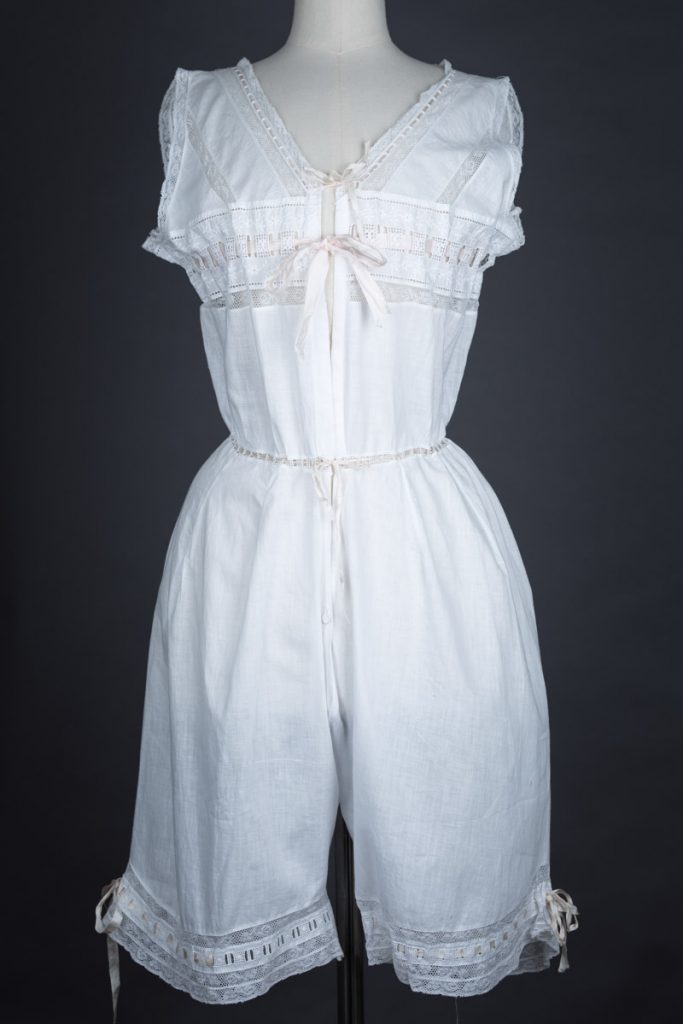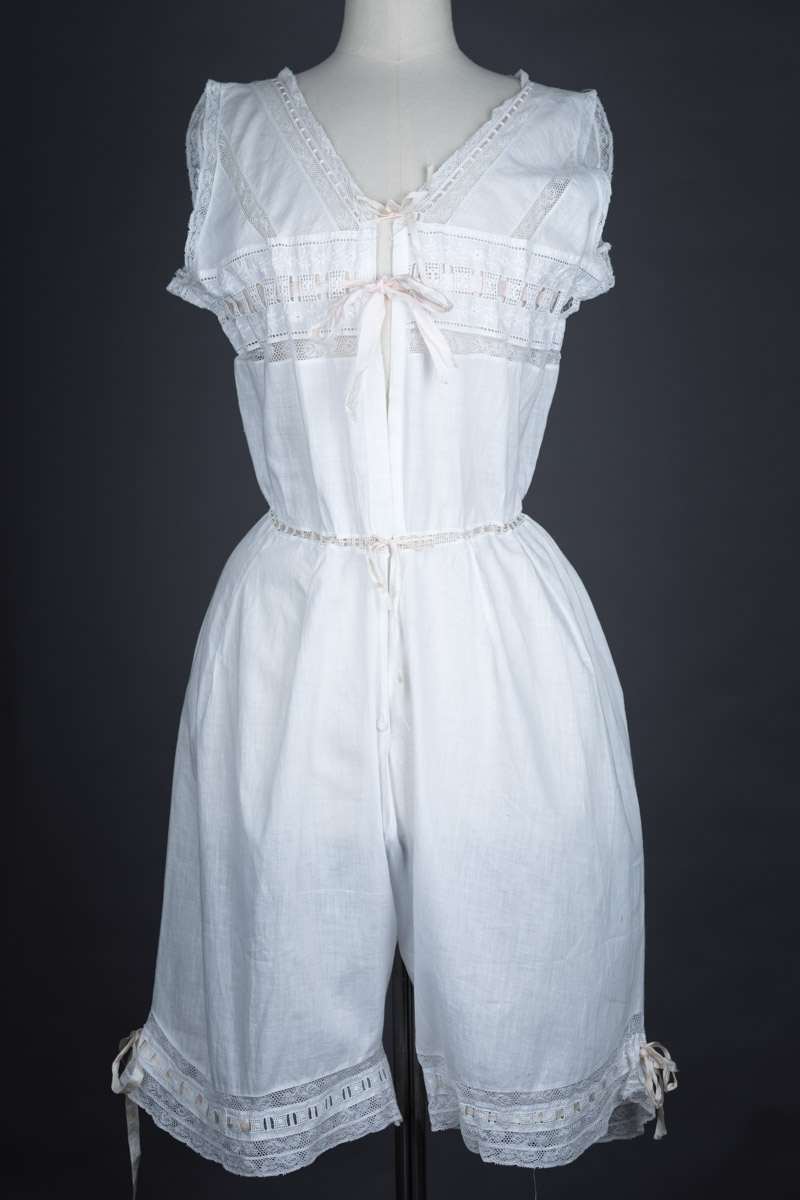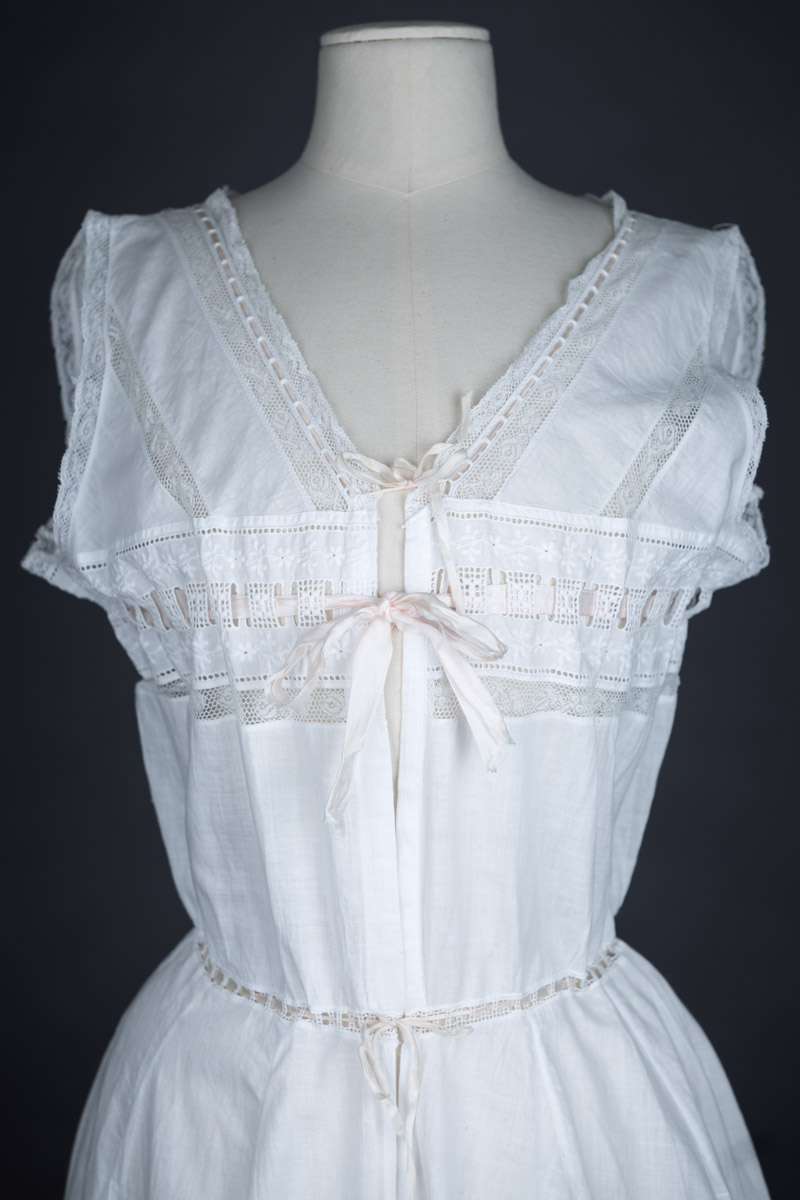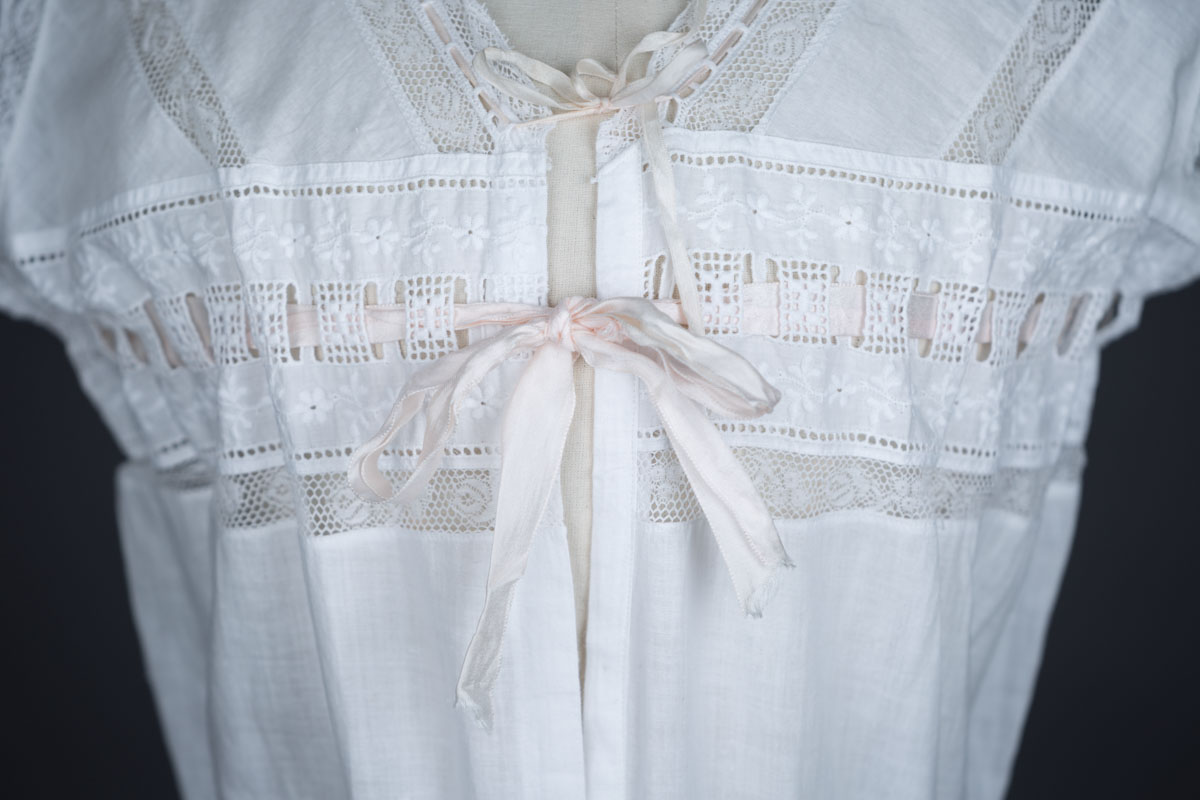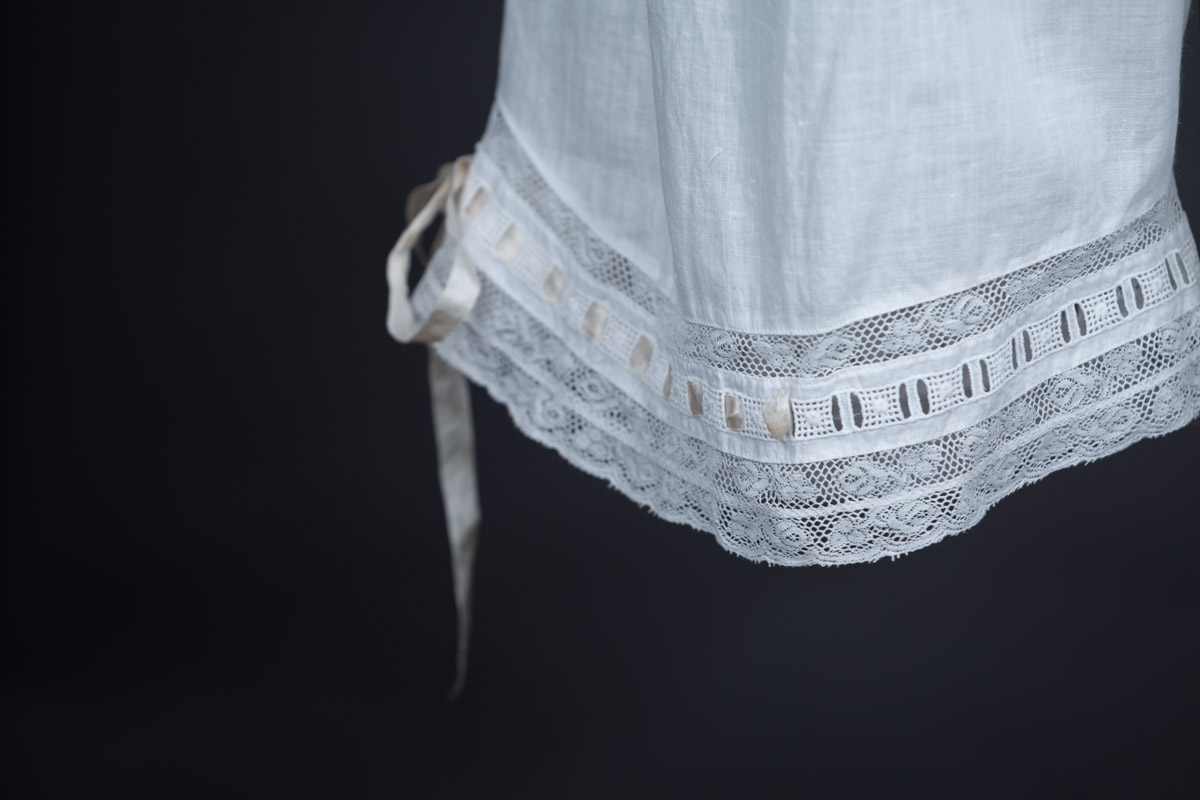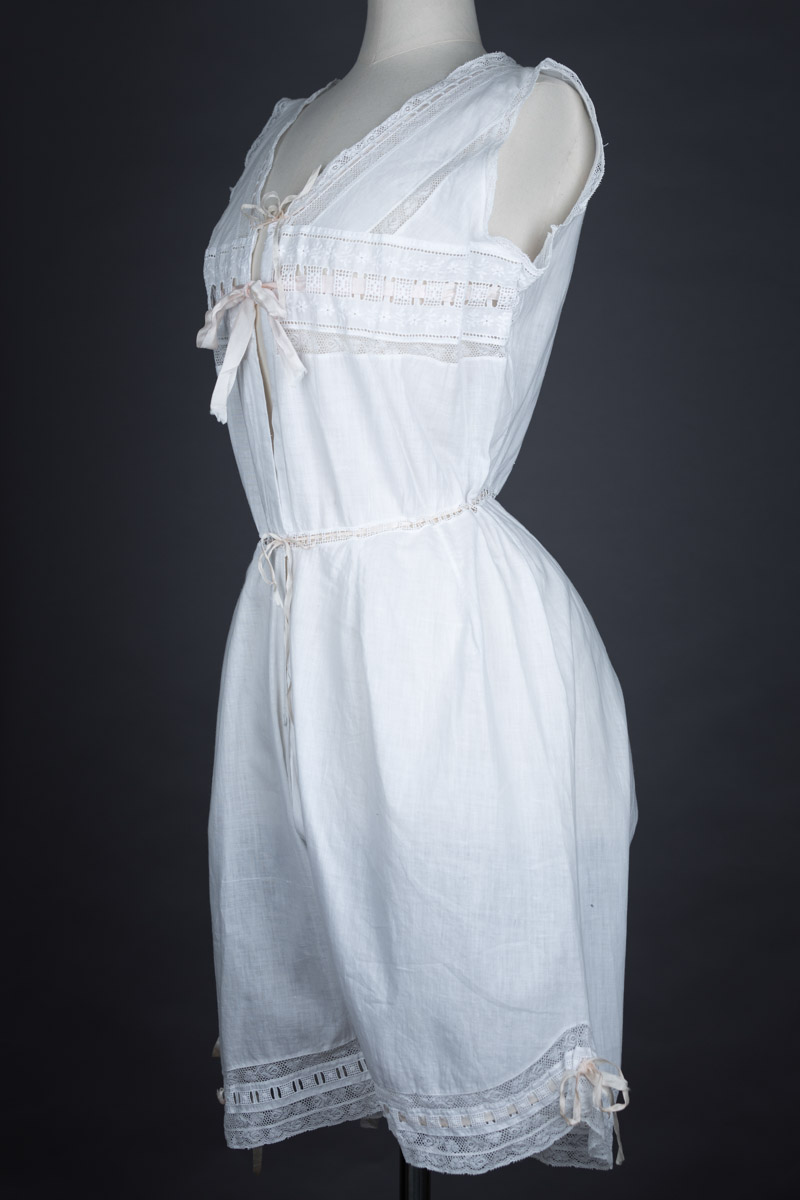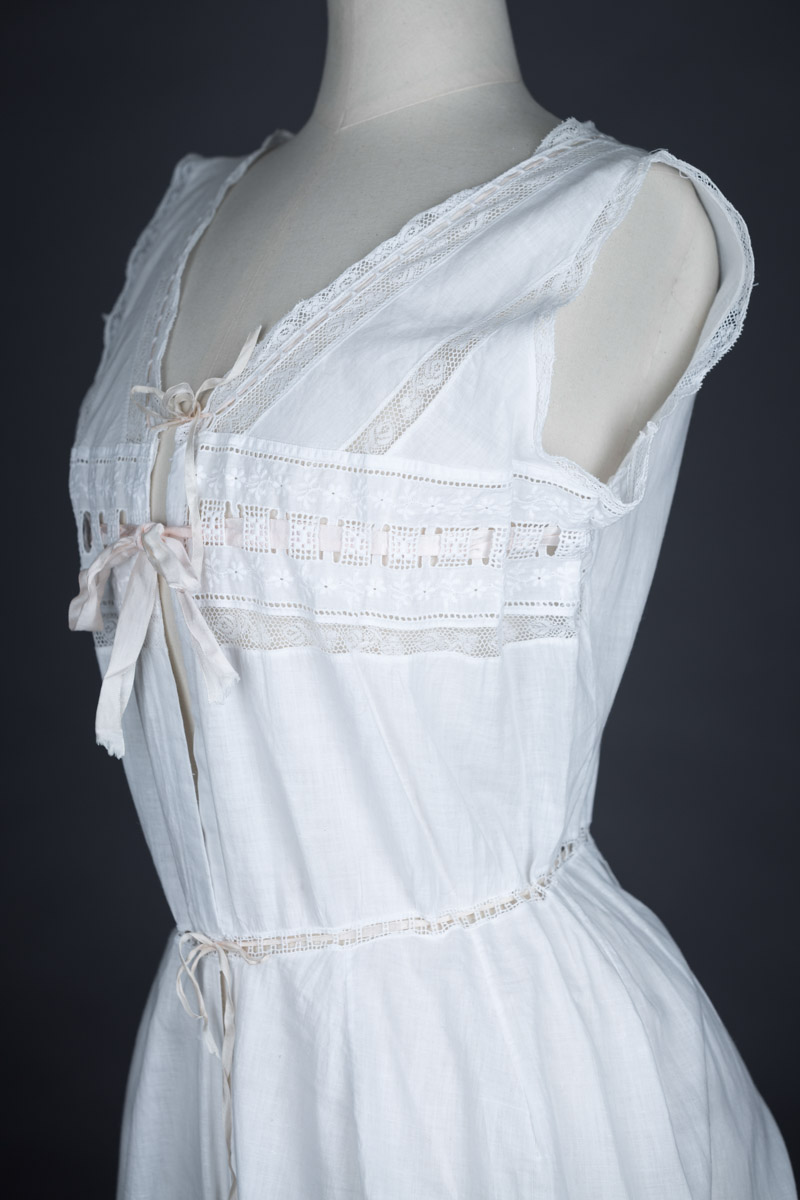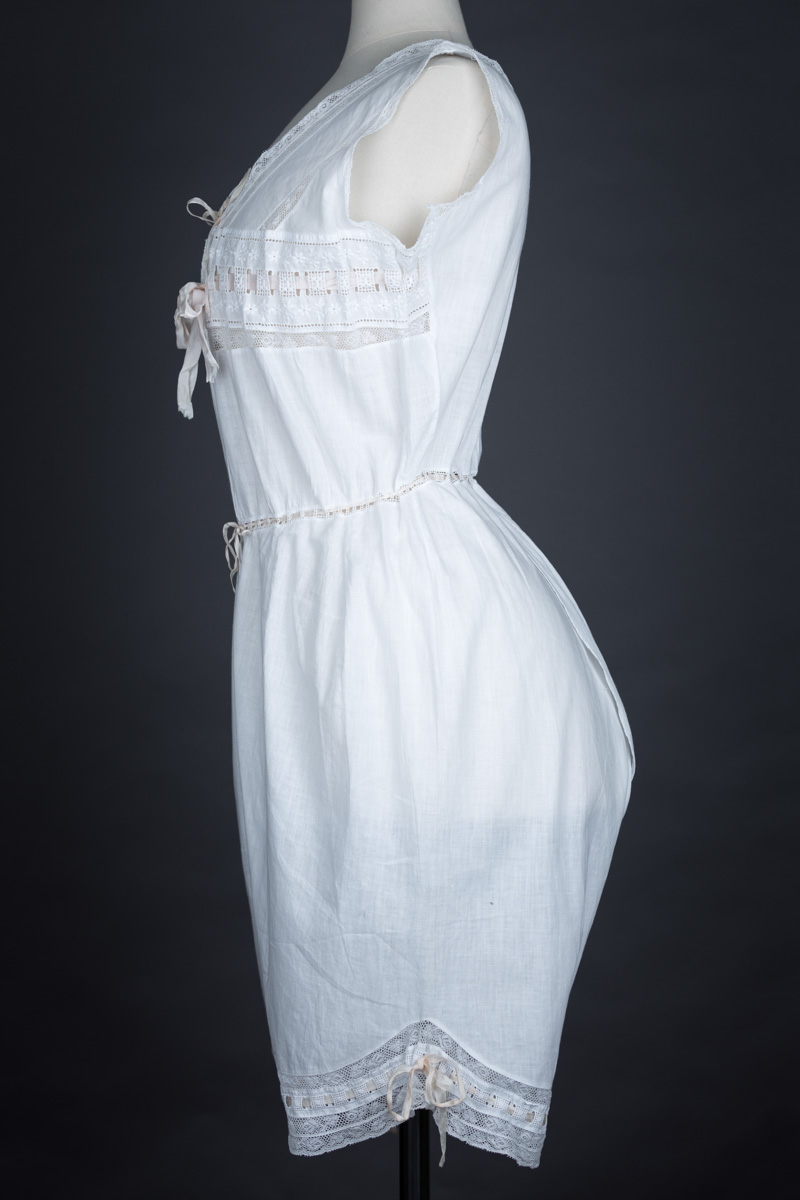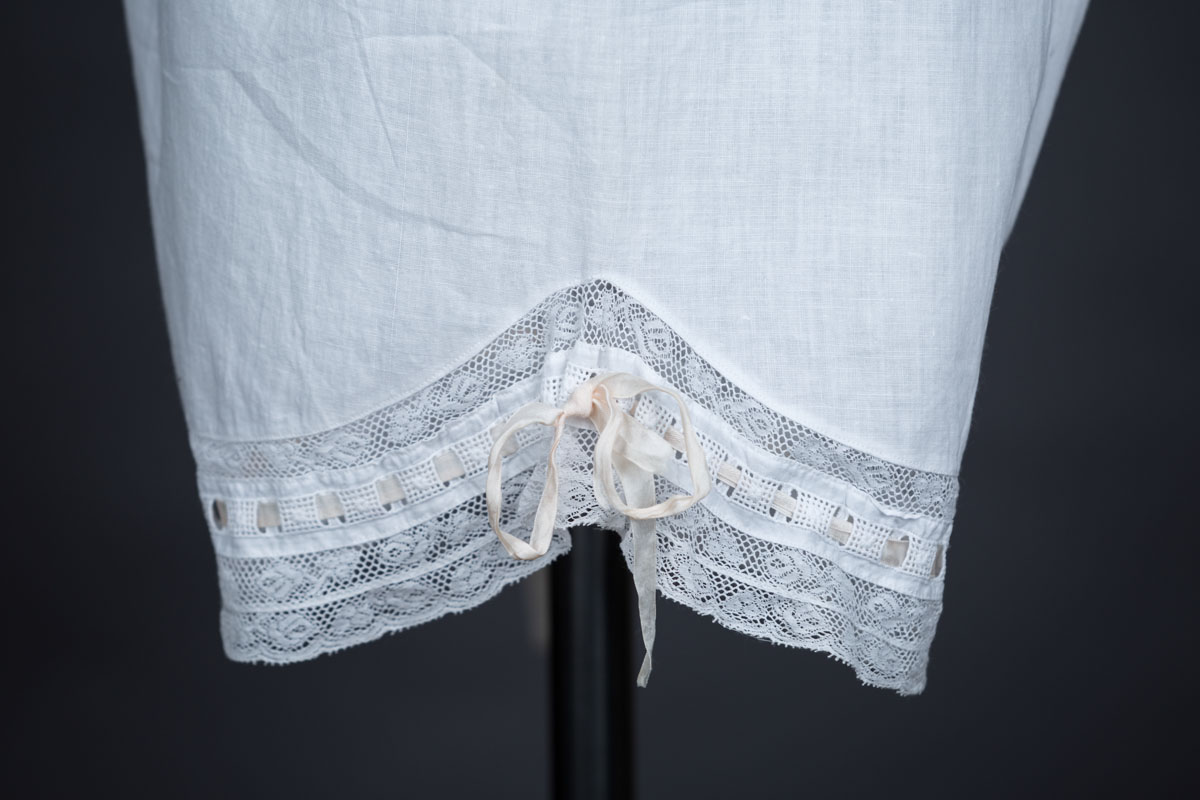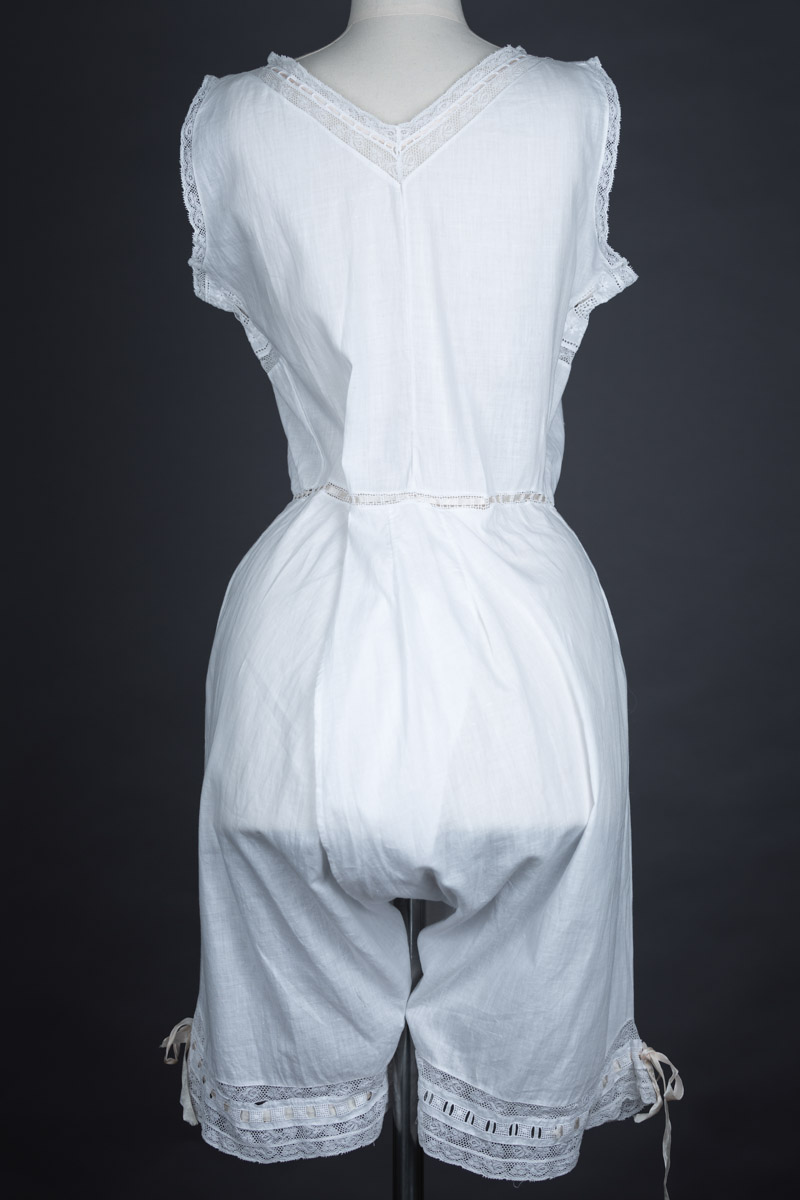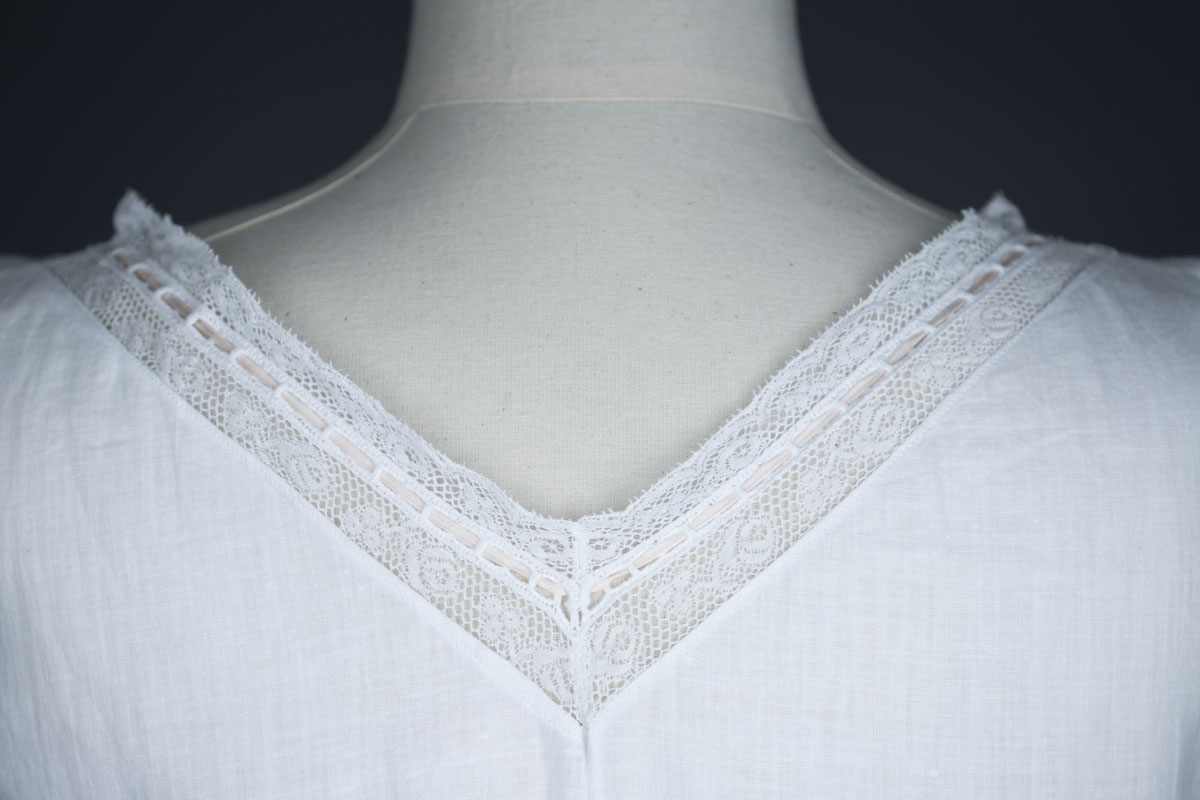Date: c. 1900s
Origin: Unknown. Possibly Great Britain
Fabric: Cotton and lace
Brand: Unknown, likely custom made
Combinations were a style of underwear popularised in the late 19th century, incorporating a camisole style bodice with split drawers, removing the need to wear a chemise and reducing the bulk of underwear layers. Split drawers were commonly worn until well into the 1920s, with the open cut a functional necessity when worn with the multiple heavy layers of outerwear fashion.
These combinations are made of a lightweight, soft cotton lawn. They are embellished with pale pink silk ribbon slotted drawn-thread work embroidery and lace at the neckline, bust, waist and leg cuffs. Embellishment is subtle but profuse, with techniques such as leavers lace insertion, whitework embroidery and faggoting embroidery. The combinations fasten at the centre front of the bodice with ribbon ties, which can be cinched in to adjust fit. The split drawers are open through the crotch and cross over at the back.
During this time period, underwear that was worn against the skin was usually made of fabrics such as linen and cotton for ease of washing; laundry was usually a relatively harsh process, with strong soaps and boiling water. Undergarments would absorb sweat and bodily oils, and were washed often, as it was difficult to effectively clean the more delicate fabrics of outer garments. Such garments would also act as a lining to corsets, which could not be washed at all.
From the collection of Karolina Laskowska
